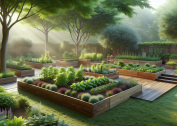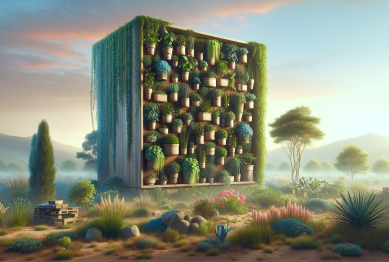Curious why some homes boast stunning indoor plants while others struggle with wilting leaves? This guide reveals the essential tips, common pitfalls, and science-backed strategies for keeping indoor plants healthy. Unlock the potential of your living space and see how a few small changes can make all the difference in indoor gardening success.
Understanding What Indoor Plants Need
Indoor plant care is about more than just watering. Light, humidity, and soil play critical roles in plant health. Even plants labeled “easy care” have hidden requirements. Some crave bright, indirect sunlight while others thrive in low light, making it important to match plants with the rooms in which they’ll live. This personalized approach helps avoid common disappointments and ensures vibrant, lush foliage year-round.
Matching the right species to your environment keeps your houseplants looking their best. Pay close attention to tags or resources provided when purchasing new greenery. Understanding what each indoor plant needs—from pothos to peace lilies—fuels real success in creating a living indoor garden. The effect is immediate: healthier growth and fewer brown tips.
Humidity is often ignored, yet it matters. Many popular plants, such as ferns and calatheas, originate from rainforests. They appreciate higher humidity than most homes provide. Using a pebble tray or grouping plants together can boost local moisture. For especially sensitive plants, a room humidifier creates an ideal microclimate right on your windowsill. Noticing crisp leaf edges? That’s a sign the air needs more moisture. Adjust accordingly and watch the transformation.
What about soil? Potting mix is just as important as sunlight or water. Different plants prefer unique blends: cacti and succulents need fast-draining soil, while tropicals enjoy a moisture-retentive mix. Never use outdoor dirt; instead, choose a commercial potting mix suited for the specific genus. A well-chosen soil supports healthy root growth, reduces root rot, and simplifies watering routines. Simple changes in soil mix can yield dramatic growth in even the most stubborn indoor specimens.
Secrets of Watering Without Overdoing It
Overwatering is the number one cause of failed houseplants. Many plants die from too much care rather than neglect. Before watering, always check the top inch of soil for dryness. If it’s still moist, wait another day. Plants like snake plants and succulents thrive on drought compared to tropical varieties, which may want consistently damp (but never soggy) roots. Knowing the difference changes everything.
Excellent drainage helps prevent problems. Always use pots with drainage holes. Sitting in water leads to root rot, a silent killer for indoor plants. If decorative pots don’t have holes, consider double-potting: one pot inside another, so excess water can escape after each watering session. This simple hack saves countless plants every season.
Seasonality matters. Plants grow faster in warmer months, so they need more water in spring and summer. During fall and winter, slow down. Let plants rest and reduce watering frequency. Learning to read plant signals—like drooping leaves or dry soil—means fewer mistakes and greater confidence. Over time, adjusting care to match the plant’s rhythm becomes second nature.
Try bottom watering for sensitive specimens. Let pots soak up water from below for 15 to 20 minutes. This encourages strong root systems and avoids leaf spots. It’s especially helpful for African violets and fussy calatheas. Explore which method your plants prefer for optimal results.
Quality of water makes a difference, too. Tap water sometimes contains chlorine or fluoride, which sensitive plants dislike. To counteract this, let the water sit overnight before using or switch to rainwater or distilled options. Keeping these small considerations in mind can revive plants that never seemed to thrive before. Healthy hydration directly leads to lush, green leaves and persistent, beautiful blooms.
The Science of Light and Where to Place Plants
Lighting is a crucial factor in indoor gardening. Every house is different, and so are the lighting conditions. South-facing windows provide bright light, suitable for succulents and cacti. North-facing rooms, with their softer glow, are perfect for low-light plants like snake plants or ZZ plants. Placing the right plant in the right window makes a noticeable difference in growth.
Some plants tolerate shade, while others are sun worshippers. Observe how sunlight shifts throughout the day. Rotate pots every week to ensure even growth and prevent plants from leaning toward the light source. Sheer curtains can help diffuse harsh light, protecting delicate foliage from scorching. Taking the time to study your space helps achieve the lush indoor look every gardener dreams of.
Artificial lighting is a modern solution when natural sunlight falls short. LED grow lights mimic the sun’s rays and can help indoor gardens flourish in dim apartments. These lights are especially useful during winter, when daylight hours shrink. Hourly timers take care of the routine, giving plants a consistent “day” and “night.” Investing in a grow light system is a smart step for urban dwellers or those exploring plant varieties needing extra care.
Light quality isn’t all about brightness; the duration and intensity also matter. Orchids and begonias, for example, benefit from morning light but shy away from intense afternoon sun. You don’t need expensive equipment—just awareness of changing light patterns and a willingness to experiment leads to thriving, satisfied plants.
Leaf color offers clues. Pale growth usually means not enough light. Scorched leaves? That’s too much sun. Watch for variegation fading—plants with patterned leaves often need extra brightness to maintain their markings. Moving a plant just a few feet closer to (or away from) a window can solve many long-standing problems. Experiment and observe. The results are often surprising and deeply rewarding.
Feeding and Fertilizing for Lasting Growth
Fertilizer is plant food, but moderation is essential. Too much, and roots burn; too little, and leaves yellow. Most indoor plants grow best when fed during their active period (spring and summer). Choose a balanced, water-soluble fertilizer and follow package instructions for dilution. Often, half-strength solutions suffice for healthy, steady growth.
Soil naturally provides some nutrients, but these are depleted over time. Replenishing them encourages bigger leaves, strong stems, and plentiful blooms. Knowing when and how to fertilize means plants stay vigorous year after year. For the sustainability-focused, organic options like compost tea or worm castings offer a natural boost.
Watch for signals from your plants. Slowed or leggy growth, smaller than usual leaves, or washed-out color suggest it’s feeding time. Conversely, if salt crusts appear on soil or leaf tips brown, adjust by skipping the next feeding. Learning the subtle language of plants helps avoid common fertilizer mistakes. Experimentation is normal—as long as corrections are made gently and gradually.
Repotting is another aspect that supports long-term plant health. Over time, roots outgrow containers, leading to cramped spaces that hinder nutrient uptake. Repotting with fresh soil every one or two years rejuvenates tired plants. The result? Renewed vitality and lush new growth after each transition. Understanding the link between proper feeding, fresh soil, and healthy roots creates a thriving, dynamic indoor garden environment.
Common Pitfalls and How to Avoid Them
Even experienced plant lovers encounter setbacks. Wilting, yellowing leaves, or sudden pests can strike at any time. The key is observation—catch symptoms early. Most leaf problems can be traced back to inconsistent care: fluctuating watering schedules, sudden light changes, or old, nutrient-stripped soil.
Regular routines prevent many issues. Dust leaves gently every few weeks so plants can breathe freely. Trim off dead or damaged parts to keep energy directed to new growth and discourage disease. A few minutes focusing on each plant each week makes surprise problems less likely.
Pest infestations—like spider mites, mealybugs, or fungus gnats—are common, but manageable. Inspect new plants before introducing them to your collection. Isolate any problem specimens, and use natural control methods, such as neem oil or insecticidal soap, for mild outbreaks. Early intervention keeps outbreaks from spreading and damaging your indoor oasis.
Unexpected setbacks offer learning opportunities. No gardener, no matter how experienced, avoids occasional failures. Resilience and curiosity transform mishaps into valuable insights, and a recovering plant brings unique satisfaction.
Understanding the role of patience is fundamental. Indoor plants often need time to adjust to new spaces or routines. Don’t rush to fix every blemish. Sometimes, letting a plant recover with minimal disturbance brings better results than constant intervention. Over time, experience and observation sharpen your instincts, turning challenges into new skills and confidence in your indoor gardening journey.
Designing Space for Maximum Plant Happiness
Arranging plants goes beyond aesthetics. Grouping species with similar needs—like humidity-loving ferns together or drought-tolerant succulents side by side—creates mini-ecosystems that are easier to care for. Strategic placement also ensures each plant receives the right light and airflow, discouraging disease and promoting balanced growth.
Using shelves, plant stands, or hanging containers lets you make the most of limited space. Vertical gardens can turn bare walls into living works of art, while window sills provide prime real estate for sun-seeking varieties. Change displays seasonally to catch shifting light and keep your indoor garden dynamic and fresh.
Air quality improves noticeably with thriving houseplants. Many species, such as spider plants and pothos, have been shown to filter common toxins from indoor air. This natural purification brings subtle but real benefits to home environments. Breathing easier and feeling calmer are often unexpected yet welcome rewards of successful indoor plant care.
Personal style also shapes plant choices and placement. Choose containers and arrangements that complement your décor, reflecting personality while bringing nature indoors. Plants quickly become living companions, offering daily reminders of the value of nurturing and attention.
Family and pets are an important consideration, too. Some plants—like peace lilies and philodendron—are toxic if ingested. Always research compatibility with curious children or animals in the household. Pet-friendly alternatives, such as Boston ferns and parlor palms, offer safe and beautiful options for every room. This adaptable, thoughtful approach guarantees that everyone can enjoy the beauty and benefits of indoor plants without worry.
References
1. The Old Farmer’s Almanac. (n.d.). Houseplant Care Guide. Retrieved from https://www.almanac.com/houseplant-care-guide
2. National Gardening Association. (n.d.). Indoor Plant Growing Guide. Retrieved from https://garden.org/learn/articles/view/1461/
3. University of Illinois Extension. (n.d.). Houseplants. Retrieved from https://extension.illinois.edu/houseplants
4. Royal Horticultural Society. (n.d.). RHS advice on houseplant care. Retrieved from https://www.rhs.org.uk/houseplants
5. NASA. (n.d.). Interior Landscape Plants for Indoor Air Pollution Abatement. Retrieved from https://ntrs.nasa.gov/citations/19930073077
6. American Society for the Prevention of Cruelty to Animals (ASPCA). (n.d.). Toxic and Non-Toxic Plants List. Retrieved from https://www.aspca.org/pet-care/animal-poison-control/toxic-and-non-toxic-plants









